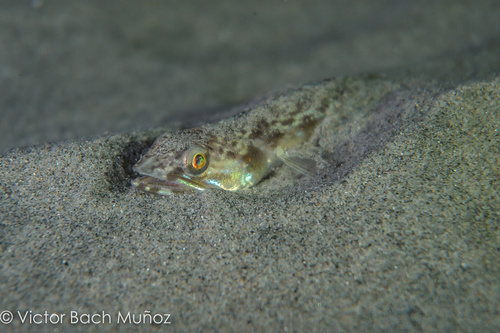
California Lizardfish
The Atlantic Bluefin Tuna (*Thunnus thynnus*) is a magnificent and highly migratory species of tuna found in the Atlantic Ocean and the Mediterranean Sea. Renowned for its size, speed, and commercial value, it plays a crucial role in the marine ecosystem. This species has been a prized food source for centuries.
2 8 years
Lifespan
64 cm
Length
Least Concern
Conservation Status
15 km/h
Swimming speed
Carnivorous
Diet
Local Migration
Migration
Appearance Overview
The Atlantic Bluefin Tuna is renowned for its large, streamlined body, built for speed and endurance.
Color
Dark metallic blue above, silvery white below
Body shape
Torpedo-like, with a crescent-shaped tail
Fins
Two dorsal fins, the first depressible into a groove; small finlets behind dorsal and anal fins
Scales
Small and cycloid (smooth-edged)
Length
Up to 13 feet (4 meters), commonly around 6.5 feet (2 meters)
Weight
Up to 2,000 lbs (907 kg), commonly around 550 lbs (250 kg)
Diet
Carnivorous, feeding on a variety of fish (like mackerel, herring, and hake), squid, crustaceans, and occasionally even on kelp.
Feeding Behavior
Highly active predator, using speed and agility to hunt. Often feeds cooperatively, herding prey into tight balls.
Social Behavior
Forms large schools, especially during migration and spawning. Schools may be segregated by size.
Commercial Relevance
Extremely high value, especially in the sushi and sashimi markets, where a single fish can fetch hundreds of thousands of dollars.
Conservation measures
Subject to strict international fishing quotas and regulations (managed by ICCAT). Marine Protected Areas also contribute to conservation.
Status
Endangered (IUCN)
Threats
Overfishing (historically and continuing in some areas), bycatch in other fisheries, climate change affecting prey distribution.
Habitat Distribution
Depth Range
0-1,000 meters (0-3,280 feet), most commonly in the upper few hundred meters.
Geographic Range
Western and Eastern Atlantic Ocean, Mediterranean Sea. Historically also in the Black Sea.
Preferred Environment
Temperate and subtropical waters, pelagic (open ocean), but also ventures into coastal areas.
Reproduction and Life Cycle
Breeding Habits
Spawns in warm waters, primarily in the Mediterranean Sea and the Gulf of Mexico. Spawning occurs in large aggregations.
Development Stages
Eggs are pelagic (free-floating). Larvae develop rapidly, feeding on plankton. Juveniles grow quickly, reaching significant size within a few years.
Fecundity
Females are highly fecund, capable of releasing up to 30 million eggs per spawning season.
Maturity Age
Reaches sexual maturity at around 4-8 years in the Mediterranean, and 8-12 years in the Western Atlantic.
Faqs about California Lizardfish
How fast can an Atlantic Bluefin Tuna swim?
They can reach speeds of up to 43 mph (70 km/h) in short bursts.
How long do they live?
They can live up to 40 years, though this is less common due to fishing pressure.
Are they warm-blooded?
Yes, they are warm-blooded, maintaining a body temperature higher than the surrounding water, which allows for greater muscle efficiency.
What is the biggest threat to Bluefin Tuna?
The main threat is overfishing, which has severely depleted populations.
Do Bluefin Tuna migrate?
They undertake long migrations across the Atlantic Ocean, often for spawning and feeding.
Copyright @ Nature Style Limited. All Rights Reserved.
 English
English